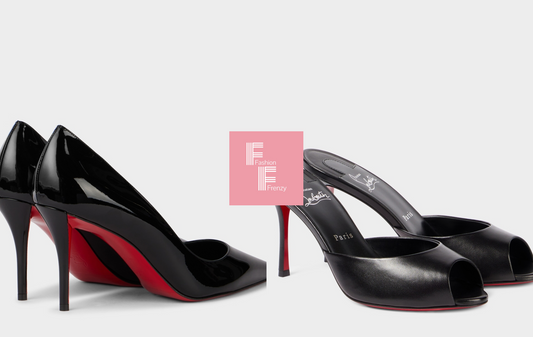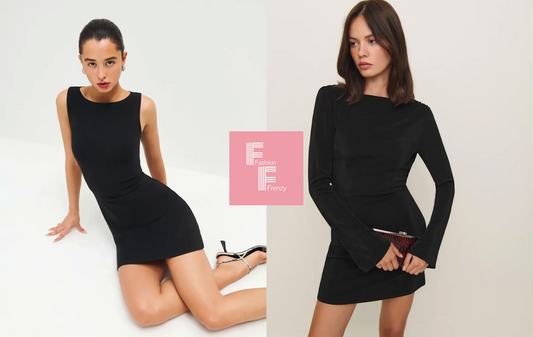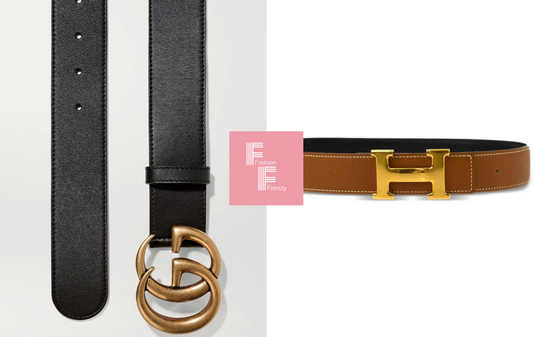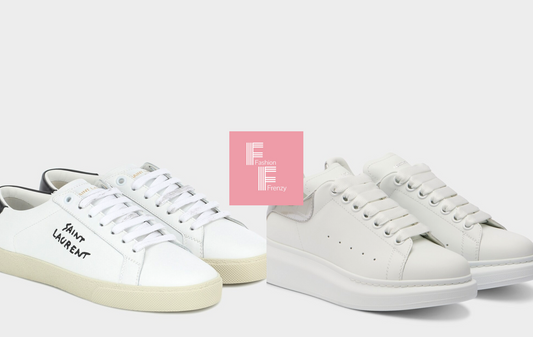A Wave of Change at Luxury Fashion Houses
Over the past six months, the fashion world has witnessed an unprecedented wave of creative director changes at top luxury brands. From late 2024 into early 2025, a dizzying number of houses said goodbye to longtime designers and welcomed new talent, reflecting a sector in flux. The shuffle comes as luxury brands face shifting markets – older high-end shoppers are more cautious, while younger generations crave fresh experiences. In response, fashion’s biggest labels are betting on new creative leadership to reinvigorate their identities and entice consumers.
Chanel’s New Chapter: Virginie Viard to Matthieu Blazy
One of the most headline-grabbing transitions was at Chanel. In June 2024, Virginie Viard – a 30-year Chanel veteran who had led the design studio since Karl Lagerfeld’s passing in 2019 – stepped down as artistic director. For six months, industry chatter swirled over who would land “the most coveted job in fashion.” The suspense ended in December 2024 when Chanel announced Matthieu Blazy as its new creative chief. Blazy, coming off a celebrated stint at Bottega Veneta, brings an outside perspective after Chanel’s years of internal stewardship. He is set to oversee all of Chanel’s collections – from haute couture to ready-to-wear – and will debut his vision with a first collection expected in October 2025. Fashion insiders reacted with excitement: Blazy’s tenure at Bottega was defined by modern craftsmanship and cool sophistication, traits seen as promising for Chanel’s next chapter. His appointment marks a strategic shift for Chanel, signaling a desire to infuse the storied house with fresh creative energy after Viard’s quieter, heritage-focused approach. All eyes are now on how Blazy will balance Chanel’s classic codes with his own innovative sensibility.

Gucci’s Turbulent Transition and Search for Revival
At Gucci, the past couple of years have been a roller coaster of creative leadership. In late 2022, Gucci’s famed creative director Alessandro Michele departed after seven spectacular years that had defined the brand’s eclectic, maximalist identity. Michele’s exit left big shoes to fill, and Kering (Gucci’s parent company) tapped Sabato De Sarno – a relatively unknown Valentino veteran – to take the helm in 2023. De Sarno’s aesthetic skewed more minimalist, a sharp pivot from Michele’s exuberant style. His mission was to recalibrate Gucci’s image and recapture flagging sales with a cleaner, more classic look. However, by early 2025, it became clear that this experiment was faltering. In February 2025, Gucci announced that Sabato De Sarno would leave the label after less than two years, amid efforts to reverse its weak sales. The shake-up – spurred by a 25% drop in Gucci’s Q3 2024 revenue and pressure to lure back wealthy shoppers – was a wake-up call. Industry reactions suggest that Gucci may seek a bolder creative direction next, possibly courting a high-profile designer to revive the brand’s buzz. As Gucci’s leadership searches for a new creative visionary, the brand faces the challenge of balancing its signature daring spirit with the market’s evolving demands. The outcome will shape Gucci’s upcoming collections and its ability to regain its trendsetting status.

Loewe Looks to New Talent as Anderson Departs
Not all the recent changes were about faltering brands – some signal ambitious next moves. Spanish luxury house Loewe, known for its artful leather goods and quirky-modern aesthetic under Jonathan Anderson, made a surprising announcement in March 2025. After 11 highly successful years, creative director Jonathan “J.W.” Anderson parted ways with Loewe, leaving behind a period in which he transformed the once-traditional label into a Paris Fashion Week favorite. Just days later, Loewe confirmed what had been widely rumored: the design duo of Jack McCollough and Lazaro Hernandez (founders of New York’s Proenza Schouler) would take over as co-creative directors. The American pair will assume full creative responsibility across Loewe’s women’s, men’s, and accessories lines starting April 2025. Their appointment was applauded in fashion circles, as many see their sophisticated “downtown cool” sensibility as a perfect match for Loewe’s blend of craft and concept. For McCollough and Hernandez, this move means stepping away from the Proenza Schouler label they built over two decades. Industry watchers speculate that Loewe’s parent company, LVMH, is banking on the duo’s proven design pedigree to continue Loewe’s momentum. Meanwhile, J.W. Anderson’s exit has ignited talk that he might be headed to another top LVMH house – he is widely expected to take the creative helm at Dior in the near future. If that rumor materializes, it would mark yet another major shift in fashion leadership. In the short term, Loewe’s upcoming collections will be under intense scrutiny as the Proenza Schouler founders put their stamp on the brand’s identity, aiming to uphold Anderson’s legacy of innovation while writing a new chapter for the house.

Valentino’s Bold Swap: Piccioli Out, Michele In
Another landmark change came at Valentino, illustrating how even the most admired creative tenures eventually transition. In March 2024, Pierpaolo Piccioli – who had led Valentino to critical acclaim with his romantic haute couture vision – stepped down after 27 years at the company (and eight years as sole creative director). Mere days later, Valentino shocked the industry by naming Alessandro Michele as its new creative director. Michele, fresh off his quiet exit from Gucci a year prior, was a headline-making choice for the Rome-based maison. The move was seen as strategically savvy: Valentino is partly owned by Kering, and bringing in Michele leveraged one of the era’s most distinctive design talents. He presented his first collection for Valentino in mid-2024, reportedly infusing the house’s elegant DNA with his flair for drama and eclecticism. Reactions to this pairing have been largely optimistic – Michele’s imaginative approach could invigorate Valentino’s ready-to-wear and accessory lines, appealing to a younger, fashion-forward audience, while building on the foundation that Piccioli laid in couture. It’s a rare instance of a star designer from one major brand seamlessly moving to another, underscoring a wider trend of luxury conglomerates shuffling talent among their stables. As Valentino prepares its upcoming seasons, the brand is balancing respect for Piccioli’s legacy of timeless elegance with Michele’s signature maximalist twist, a combination that could set a new creative direction for the label.

New Directions at Givenchy and Alexander McQueen
Luxury houses are also looking to new leadership to navigate changing times. In late 2023, Alexander McQueen bid farewell to Sarah Burton, the revered designer who had sustained the McQueen legacy for 13 years after the founder’s passing. Kering chose to promote from within, appointing the relatively unknown Seán McGirr as the new creative director in October 2023. McGirr, an alumnus of JW Anderson’s team, represents a generation shift and a continued strategy of nurturing in-house talent. His task is to bring a powerful creative language to McQueen while honoring its unique heritage, according to the brand’s CEO. The industry’s response combined surprise with curiosity – instead of a boldface name, McQueen opted for someone under the radar, perhaps aiming for continuity and fresh energy without the baggage of a superstar. McGirr’s debut is expected to build gradually on Burton’s meticulous, archive-inspired work, and the fashion world will be watching how he carves out his own vision for McQueen’s future.

Meanwhile, at Givenchy, owned by rival conglomerate LVMH, a high-profile hire made waves. In September 2024, Givenchy announced that Sarah Burton would take over as its new creative director. This came after the streetwear-oriented Matthew Williams stepped down following a three-year tenure that met mixed reviews. Burton, celebrated for her couture craftsmanship at McQueen, called Givenchy a jewel and expressed excitement to bring her vision to the iconic Parisian house. Her arrival signaled a deliberate shift for Givenchy back towards refined tailoring and poetic design, aligning with the brand’s elegant legacy (from Audrey Hepburn’s little black dress era) more than Williams’s urban aesthetic. Fashion insiders greeted the news with enthusiasm, seeing Burton’s appointment as a melding of couture-level skill with a major maison that had struggled to find its groove. With Burton at the helm, expectations are high that upcoming Givenchy collections will emphasize artistry, construction, and a touch of drama, potentially re-establishing the label as a critical darling.

Balenciaga Stands Firm Amid Controversy
In contrast to the whirlwind of director exits elsewhere, Balenciaga notably did not change its creative director in this period – but it did undergo a strategic recalibration. Demna (Demna Gvasalia), who has led Balenciaga since 2015, came under fire in late 2022 over a controversial ad campaign featuring children and explicit props. The backlash was severe, yet Demna remained in his role, issuing public apologies and vowing to change his approach. In early 2023, he stated he would eschew provocative button-pushing stunts and refocus on the house’s heritage of fine tailoring. Indeed, his first collection after the scandal was notably stripped of the shock tactics that had defined Balenciaga’s recent years. However, by late 2023, Demna was cautiously reintroducing his signature subversive humor – for example, staging a tongue-in-cheek Los Angeles show satirizing wellness culture. The fashion industry’s reaction to Balenciaga’s saga has been mixed. Many applauded the commitment to reform, while others watched warily to see if the brand would truly pivot or slip back into controversy. So far, Balenciaga’s sales have rebounded among younger consumers, proving the label’s enormous cultural cachet even amid criticism. The takeaway is that Kering chose stability for Balenciaga, standing by a visionary designer and betting that he could course-correct. Going forward, Balenciaga’s creative strategy seems to be about finding equilibrium – maintaining the edgy, viral sensibilities that made it a phenomenon, but with greater sensitivity and restraint. In a landscape of rapid-fire creative director swaps, Balenciaga’s decision to stay the course with Demna highlights that sometimes a brand’s evolution comes from introspection rather than new leadership.

Other Notable Creative Shuffles
The musical chairs of fashion leadership extended to several other prominent houses as well. At Bottega Veneta, Matthieu Blazy’s departure to Chanel prompted the brand to tap British designer Louise Trotter as his successor, with Trotter set to start in early 2025. Over at Celine, LVMH made a dramatic change in October 2024 by parting ways with Hedi Slimane – known for his cult-inducing, rock-chic style – and appointing Michael Rider (formerly of Ralph Lauren) as the new creative director. This move ended Slimane’s seven-year reign at Celine and suggests the house may be aiming for a fresh direction after years of his singular aesthetic. Even the Tom Ford label saw upheaval: in 2024, designer Peter Hawkings exited after only two collections, and fashion veteran Haider Ackermann was brought on to oversee the brand’s menswear, womenswear, and accessories. Meanwhile, legendary couturier John Galliano made news by stepping down from Maison Margiela after a decade of critically acclaimed work, leaving fans wondering who (if anyone) can fill his avant-garde shoes. Each of these changes, big or small, feeds into the narrative of an industry in the midst of a generational turnover.

The Big Picture: A New Era of Fashion Leadership
Taken together, these creative director shake-ups point to larger shifts across the fashion landscape. Top luxury brands are clearly unafraid to make bold moves in pursuit of creative rejuvenation and market relevance. In some cases, conglomerates are swapping star designers between houses to keep excitement high (as seen with Michele from Gucci to Valentino, or rumors of Anderson to Dior). In other instances, firms are elevating emerging talent or trusted insiders, hoping to foster the next visionary from within (McGirr at McQueen, Blazy originally at Bottega). There’s also a trend of embracing cross-pollination between independent and big-name brands – the Proenza Schouler designers joining Loewe exemplifies this collaborative spirit. And of course, celebrity and outsider appointments (like Pharrell Williams taking over menswear at Louis Vuitton in 2023) show that luxury behemoths are willing to break the mold to connect with new audiences.
The fashion industry’s reaction to these changes has been equal parts excitement and caution. New creative directors generate buzz and anticipation for upcoming collections, but they also face intense pressure to deliver both creatively and commercially, often on unforgiving timelines. As we head into the next season, there’s a palpable sense that the identity of many iconic labels is being rewritten in real time. Will these new leaders breathe fresh life into heritage houses and capture the zeitgeist? Brands like Gucci and Chanel are pinning their hopes on it, while others like Balenciaga demonstrate that doubling down on an existing vision can also be a viable path.
One thing is certain: fashion’s “musical chairs” of creative directors is far from over. This recent flurry of appointments and departures underscores how dynamic and fast-changing the industry has become. For fashion enthusiasts, it’s an exciting moment to watch. Each transition not only heralds a different design approach on the runway, but also reflects deeper shifts in how luxury brands are positioning themselves for the future. In an era defined by rapid trend cycles and evolving consumer values, the right creative leadership is more crucial than ever. These high-profile creative director changes signal a new era of fashion leadership, one that will shape the collections, brand images, and retail experiences we see in the seasons to come.
Ultimately, the success of these moves will be judged as the new creative visions unfold. As the dust settles from this game of designer musical chairs, the world waits to see which fashion houses will flourish under their new direction – and which might find themselves back at the drawing board. For now, the only constant in fashion is change, and it’s unfolding at the very top of the world’s most famous ateliers.














